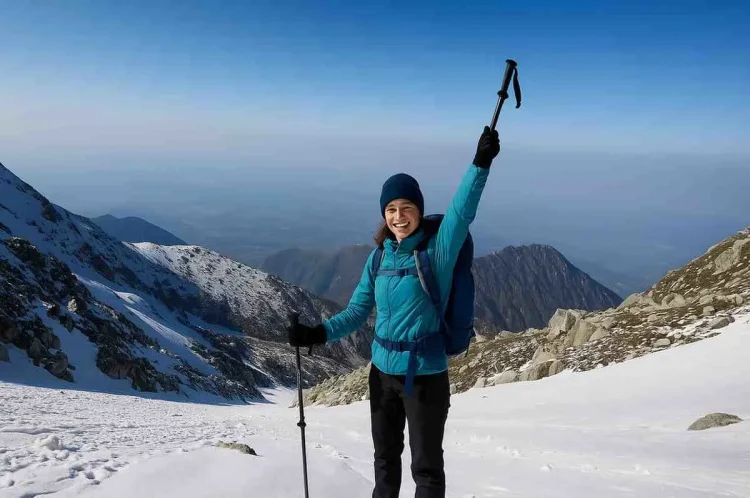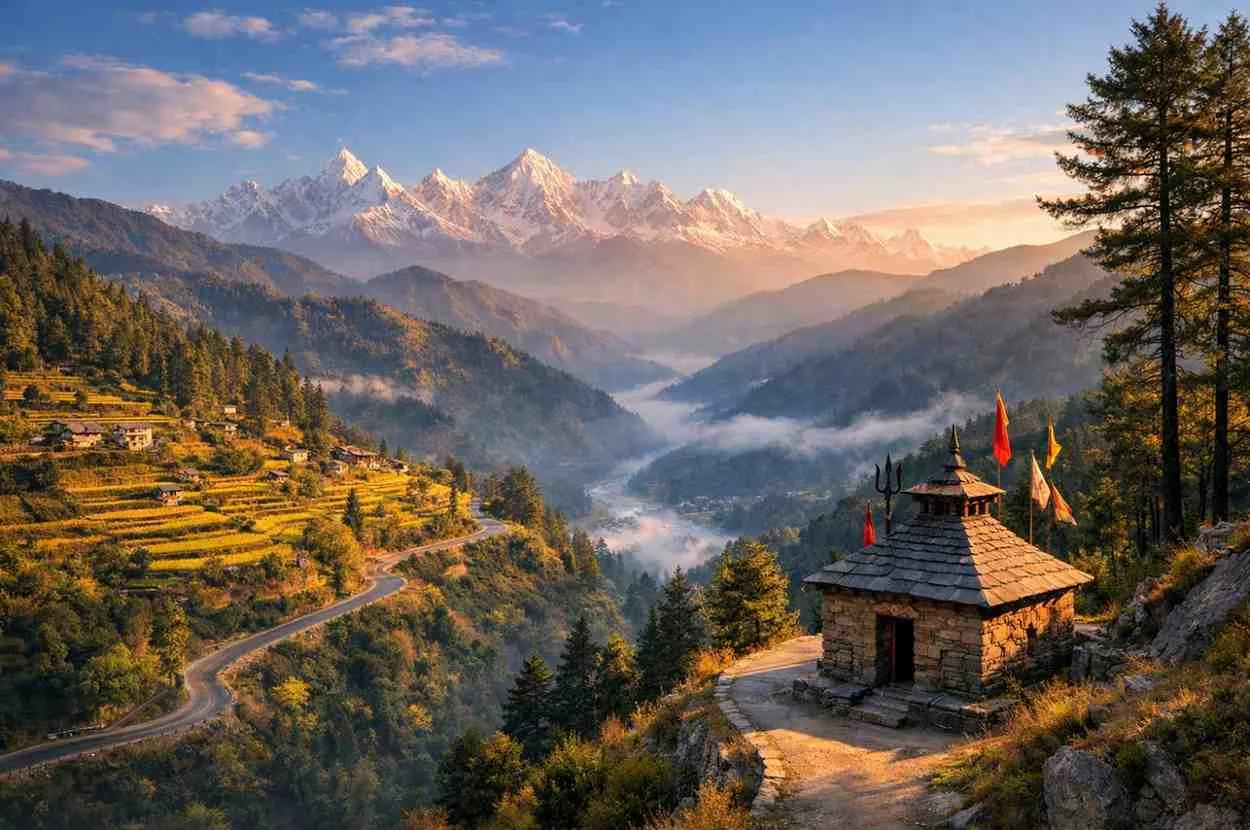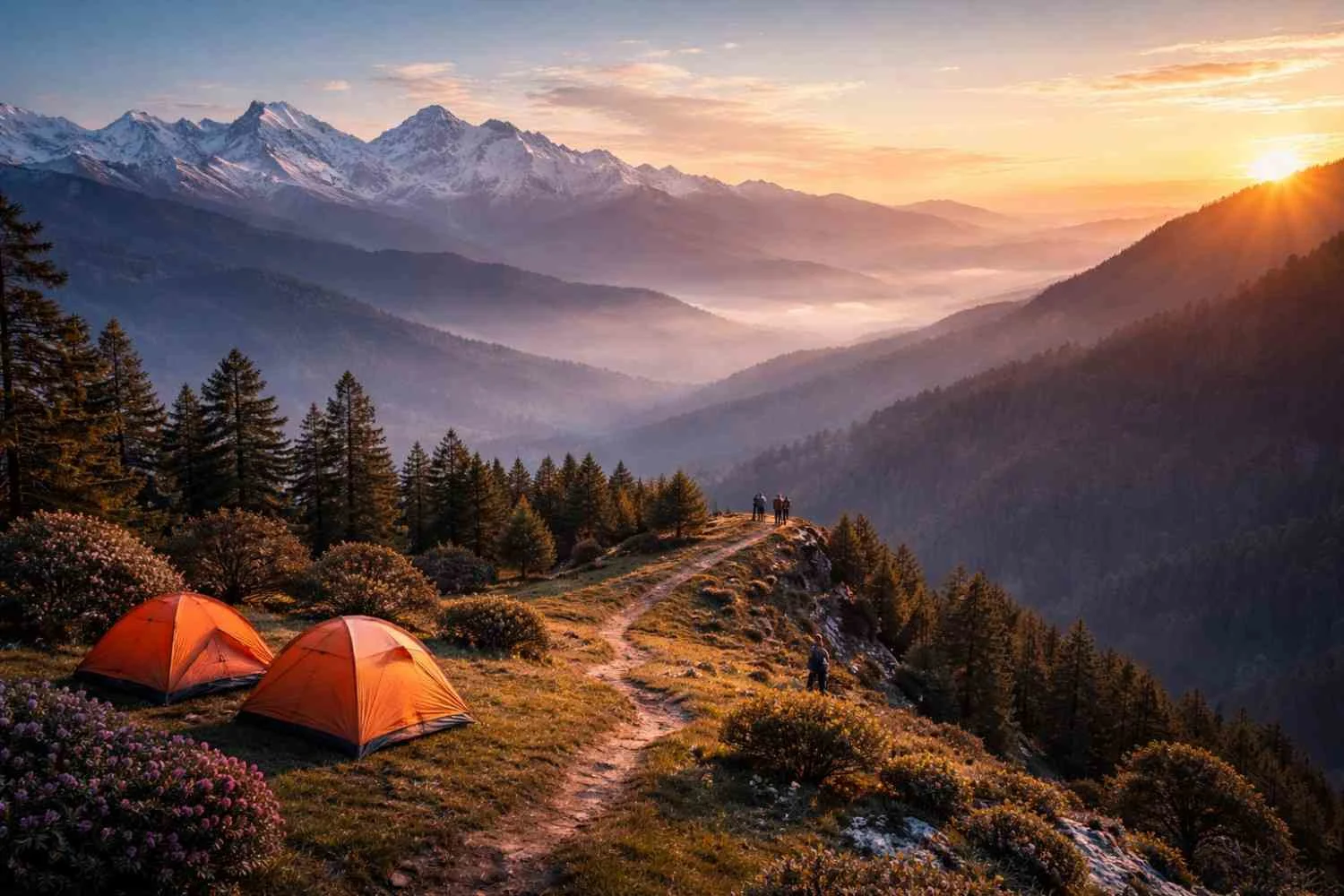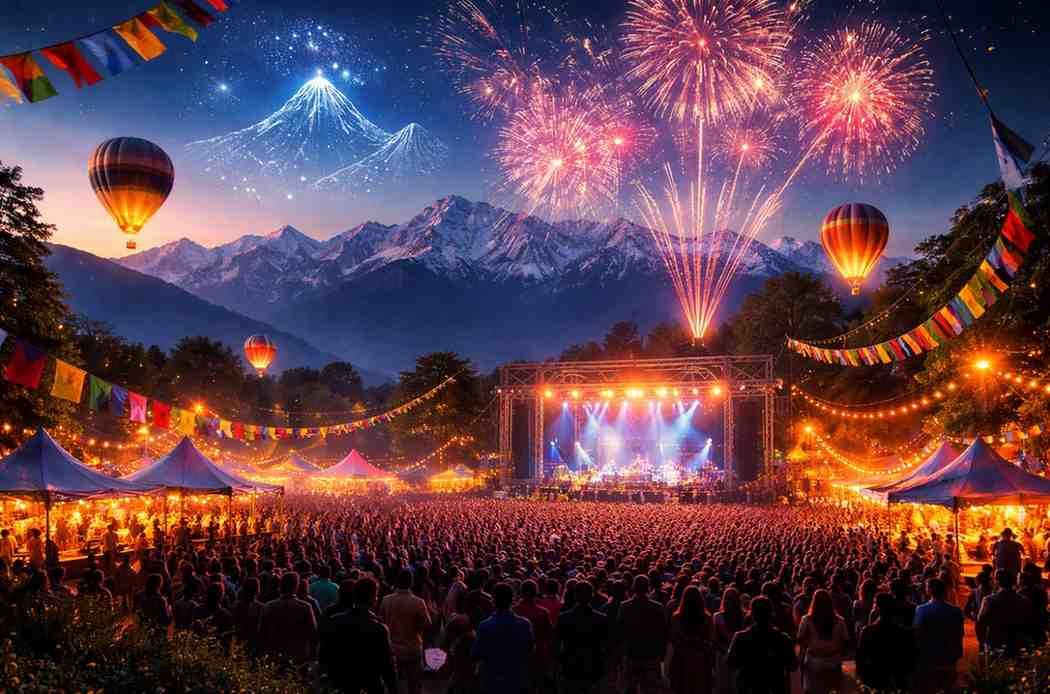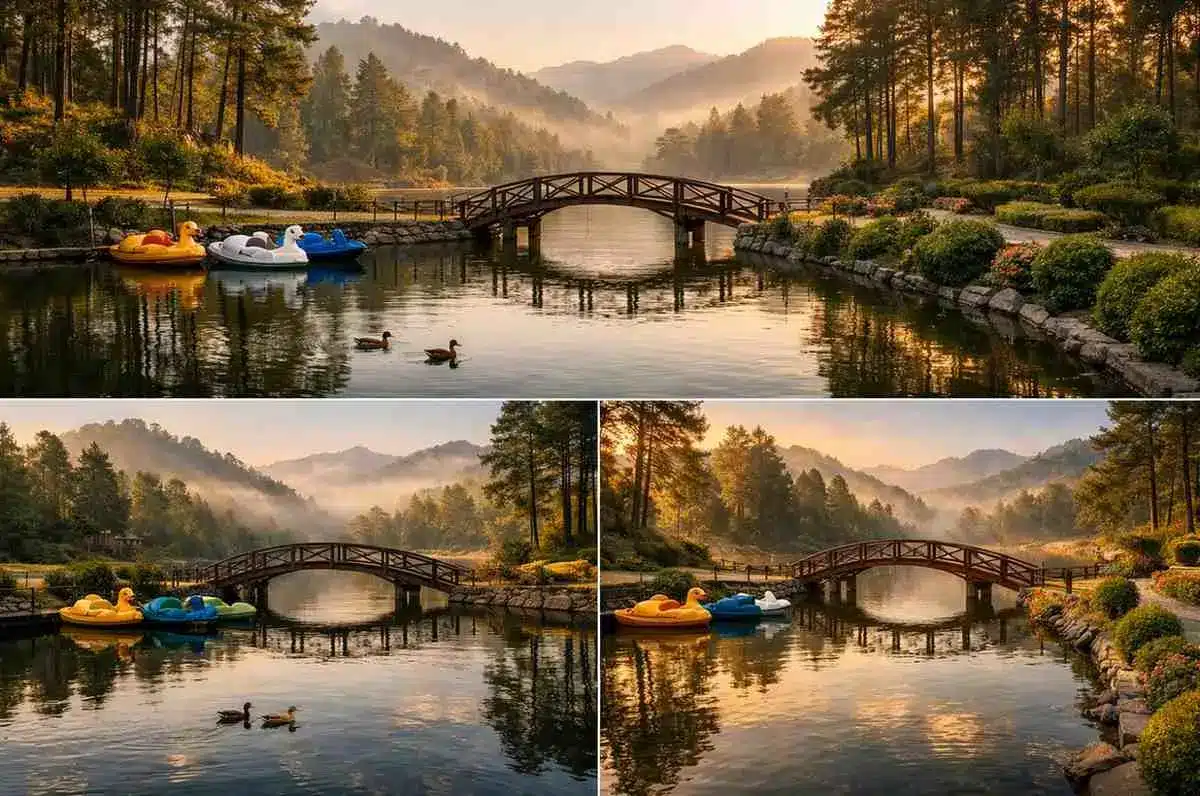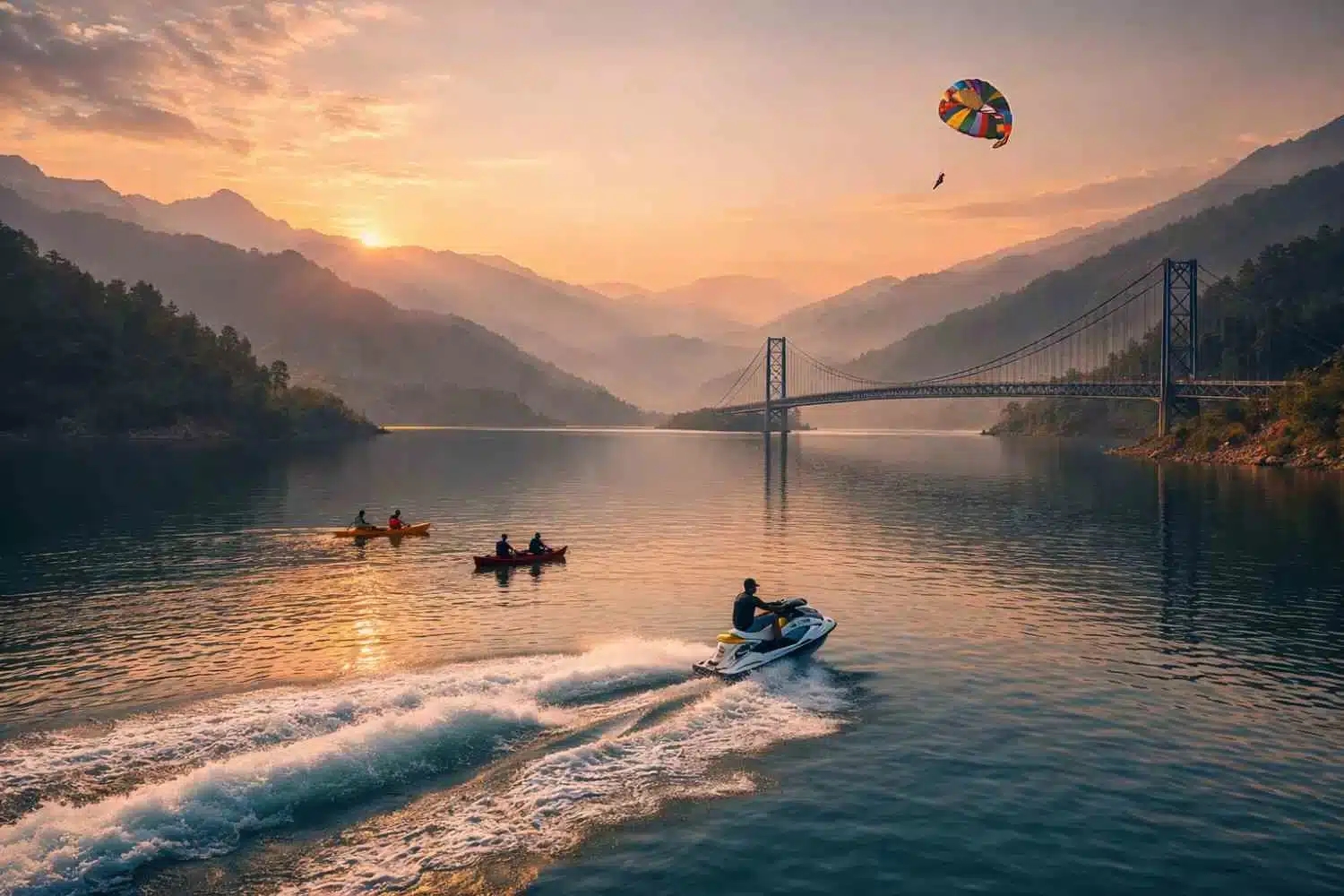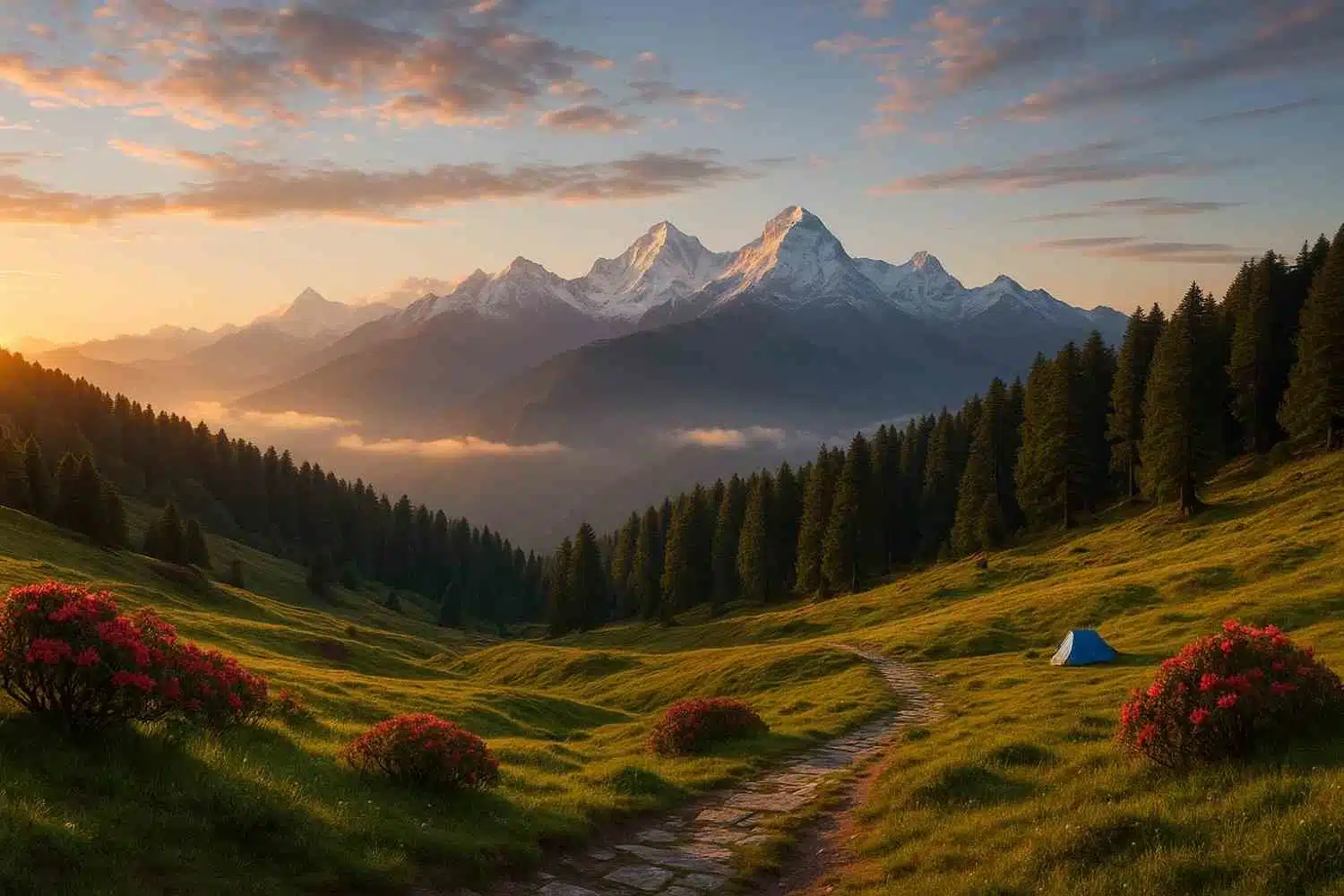The Indrahar Pass Trek is a breathtaking high-altitude route nestled in the heart of Himachal Pradesh’s Dhauladhar Range. Rising to around 14,245 ft (4,342 m), it offers a solid challenge without going full-blown mountaineering, which makes it a perfect fit for those beyond beginner treks but not quite ready for technical climbs.
What makes the Indrahar Pass Trek stand out is its balance. Think steep ascents, rocky terrain, and narrow ridges mixed with glacial streams, alpine meadows, and sweeping mountain vistas. It pushes you just enough. Quick facts: The trek usually takes between 4 and 6 days, depending on your pace and route. Difficulty? It’s intermediate-preparedness and some past trek experience help, but no technical gear is needed. The best time to go is between May and October, when the trails are free from heavy snow and monsoons. You get long days, crisp weather, and the chance to catch sunrise over the Dhauladhar peaks. Ready to dive deeper? Let’s go!
Where Is Indrahar Pass Located?
So, where exactly is this magical stretch of trail? The Indrahar Pass Trek is perched between Kangra and Chamba districts in Himachal Pradesh. The trek’s gateway is McLeodganj, a quaint hill town just above Dharamshala, or nearby Dharamkot if you prefer a quieter start.
Geographically, the route is framed by the craggy Dhauladhar Range to the south and the Pir Panjal Range to the north. The pass itself stands at approximately 14,245 ft (or about 4,342 m), making for dramatic elevation gain. From McLeodganj, you travel through lush pine forests and open meadows, gradually climbing up to Triund and further toward the pass.
Not only is McLeodganj a convenient starting point, it’s also culturally vibrant. You’ll feel Tibetan influences, thanks to the Dalai Lama’s residence there, mixed with local Gaddi shepherd traditions. This adds cultural richness to the trek. Being so close to tourist hubs like Dharamshala means good accommodation and trekking support. Yet once you leave behind the trailheads, it’s all wilderness, ideal for intermediate trekkers who want challenge without isolation.
Trek Overview & Itinerary
Let’s break down the classic Indrahar Pass Trek route. You’re looking at a 4–6 day journey, depending on how many camps you pitch and if you cross over to Chamba or return to Dharamshala.
1. Day 1: McLeodganj → Triund
Starting from McLeodganj (or Dharamkot), you ascend through pine forests and open meadows. The climb is steady but manageable, with roughly 5–6 km of uphill to reach Triund (2,850 m). Camp here under star-studded skies.
2. Day 2: Triund → Snowline → Ilaqa Got
Cross Triund’s skyline ridge early to avoid afternoon winds. You hit the Snowline (around 3,200 m), where the terrain shifts from grass to scree and stone. Aim to camp just below Ilaqa Got (3,600 m) to acclimate.
3. Day 3: Ilaqa Got → Lahesh Cave
From Ilaqa Got, head into more rugged terrain, climbing beside glacial streams. You reach Lahesh Cave (about 4,300 m), a popular nightspot for acclimatization and shelter. Camp here after a shorter trek day to prepare for the summit push.
4. Day 4: Lahesh Cave → Indrahar Pass → Descent
This is the big day. You leave before sunrise, tackle the final rocky slopes, and arrive at the Indrahar Pass at around 14,245 ft. The views of Kullu and Kangra valleys are epic. Option A: Return to Lahesh Cave or Ilaqa Got for descent. Option B: Cross over to Kuarsi/Chamba, turning the trek into a one-way route (requires a bus or drop-off pickup).
Optional Days:
You can choose a 5 or 6-day schedule by spreading activities out more: adding extra rest days, trekking back slowly, or exploring side valleys before heading home. The flexibility is one of the trek’s draws-ideal for an intermediate expedition.
Also Read: Minjar Mela: The Vibrant Celebration of Culture and Harvest in Himachal Pradesh
Difficulty Level – Why It’s for Intermediate Trekkers
Here’s why the Indrahar Pass Trek is squarely aimed at intermediate-level trekkers: it’s challenging, but not technical. You’ll scramble over rocky ledges, handle steep ascents, and navigate narrow ridges. There’s a mix of trekking routes-forest trails, rocky slopes, scree fields, and occasional snow patches, especially closer to the pass or above Snowline.
Fitness matters. You don’t need climbing gear, but you do need strong legs, decent cardio, good balance, and familiarity with altitude. The weather can shift quickly. You might face snow, rain, slippery sections, or even light snowstorms depending on the season. This trek isn’t advised for first-timers or those with less trekking conditioning. But it’s also not technical enough to require ropes, harnesses, or ice axes. That sweet zone of moderate risk and reward. Experienced trekkers will appreciate the physicality, scenic payoff, and gradual building of effort-slash-altitude, but someone fresh off the couch may find it overwhelming-or even unsafe.
Trust me, after a couple of local treks, you’ll be ready. For context, acclimatization is important, so the trek itinerary wisely includes stops at higher camps. Overall, it’s a no-nonsense test of endurance, balance, and altitude tolerance-exactly why it’s marketed as an Indrahar Pass Trek for intermediate trekkers.
Best Time to Visit
Choosing when to hit the Indrahar Pass Trek is key. Ideal window? May to October.
- May–June: Trails free from snow, weather mild, skies clear. You may still hit small snow patches near the pass.
- July–August (Monsoon): Avoid. While low areas get soaked, higher rainfall brings landslides, slippery ascents, and clouded views.
- September–October: Prime time. Post-monsoon sweep brings fresh viewing visibility, cool nights, crisp mornings. Snow starts around late October.
- Late October–November: Possible to attempt, but deepening snow may close the pass.
In short, your best bet is late spring to early autumn. That’s when the Indrahar Pass Trek trails are safest, the weather is stable, and the views are panoramic. Skip the wettest months-they can tough out the difficulty and increase risk beyond intermediate-level. Setting the summit day in September? Expect dynamic, post-monsoon Indian Himalayas. Clear days, moderate temps, all the rewards.
Highlights of the Indrahar Pass Trek
There’s a lot to praise about the Indrahar Pass Trek, and some moments stay with you long after.
1. Scenic Mastery:
The Dhauladhar range volleys at you from all angles. From Triund’s ridge, guard-like peaks stretch. Climb higher and you cross paths with Pir Panjal snows. It’s visual immersion.
2. Camping Under the Stars:
Triund and Lahesh Cave spots come with sky-gazing perks. With low light pollution, you can sprawl out and catch shooting stars or crisp moonlit nights. It’s rugged romance for nature lovers.
3. Glacial Streams and Alpine Meadows:
Water runs in rivulets. Seasonal wildflowers occasionally pepper green meadows below Snowline. Above the tree line, zones feel otherworldly and peaceful.
4. Wildlife & Flora:
You might glimpse Himalayan marmots or Ibex roaming high altitudes. During spring, alpine flora-edelweiss and rhododendron-paint the trail edges. If flora or fauna matters to you, it’s a bonus.
5. Cultural Layers:
Trekking trails once used by Gaddi shepherds blend with peaceful Tibetan plateaus near Dharamshala. You meet local kids, herders, maybe get invited to chai in a shepherd’s hut. Indo-Tibetan cultural mix adds depth.
All that packs into a moderate trek. You’re not just climbing; you’re living in shifting ecosystems-forest to meadow to rock to snow. That’s the essence of the Indrahar Pass Trek, Himachal Pradesh experience.
What to Pack for the Indrahar Pass Trek
Let’s make sure you don’t forget the essentials for your Indrahar Pass Trek. Packing smart increases comfort and can be lifesaving at altitude.
1. Footwear & Clothing:
Bring sturdy trekking shoes with good ankle support and tread. Wear layered clothing-base merino/synthetic, fleece mid-layer, and a weatherproof shell. Add gloves, thermal vest, and liner, hat-nights at high altitude get cold quickly.
2. Rain Gear:
A lightweight rain jacket and over-pants are essential-monsoon showers can hit unexpectedly, even in May or September.
3. Accessories:
Trekking poles (help with knees and balance), sunglasses (UV protection), sunscreen (high altitude sun is stronger), and a warm buff or beanie.
4. Hydration & Nutrition:
Two 1-liter water bottles or a hydration bladder, plus purification tablets or a filter. Carry energy bars, trail mix, chocolate bars, and electrolyte packets.
5. First-Aid Kit:
Include blister care, bandages, pain relievers, altitude drops, or Diamox if needed. Also, carry a multi-vitamin.
6. Documents & Tech:
ID proof (Aadhar or Indian ID for locals), a copy of any permits, a local SIM card (network is patchy but worth it), plus a portable power bank, headlamp, a phone or GPS device.
7. Camping Gear (if you’re self-supported):
Lightweight 3‑season tent rated for wind, a quality sleeping bag (comfort till 0 °C), and an insulated sleeping mat. If hiring local tents, make sure they’re fit-for-altitude.
That’s your base setup. No climbing gear. No sherpa service needed. Just layers, hydration, safety tools-solid intermediate-level kit to match the terrain.
Permits, Guides & Safety Tips
No complicated bureaucracy here-just common sense backed up with prep.
1. Permits:
Indian nationals don’t need permits. Foreign visitors may need a Restricted Area Permit (RAP) near higher ranges. Check the latest Himachal Forest rules beforehand.
2. Guides & Porters:
Not required, but highly recommended. Local guides not only carry gear but also know weather patterns, terrain, and high-altitude first aid. Hiring a porter spreads the weight and speeds up the trek for those not used to heavy packs. That said, solo intermediate trekkers with experience and good navigation skills can manage with proper prep.
3. Acclimatization Tips:
The trek itself provides gradual altitude gain, but acclimatization still matters. Drink plenty of water, ascend gradually, and consider an extra night at Triund or Snowline if you have mild symptoms. Avoid alcohol and smoking at least 48 hours before going above 3,000 m.
4. Safety First:
Check the weather daily. Turn back if cloud cover rolls in and visibility drops. Avoid lateral traverses when wet or snowy. Keep track of group mates-altitude can affect cognition. Always carry the forest department contact numbers and local trekking group helplines (e.g., from the McLeodganj tourism desk).
5. Avoid Solo Trekking:
Unless you’ve done multiple 4,000 m-plus hikes and emergency scenarios, go with a trusted team or guide. Unexpected weather, fatigue, or altitude sickness can creep up.
What this means is: planning and partnership matter. Not because the trek is technical, but because high-altitude environments and intermediate-challenge terrain deserve respect.
How to Reach the Base
Reaching the Indrahar Pass Trek base is straightforward. Here’s how to make it to McLeodganj or Dharamkot.
1. By Air:
Fly into Gaggal Airport, also called Kangra Airport. It’s about 15 km away from Dharamshala/McLeodganj. Taxis or pre‑booked cars are easy to find.
2. By Rail:
The nearest railhead is Pathankot Railway Station, roughly 90 km away. From there, buses and taxis run to Dharamshala.
3. By Road:
Direct buses from Delhi (12–14 hrs), Chandigarh (6–7 hrs), and other North India cities. Private taxis are also popular. Road quality is mostly smooth until Dharamshala.
4. Final Ascent:
From Dharamshala or McLeodganj, tuk-tuks, shared taxis, or walking can take you to the actual trailhead. McLeodganj is your arrival point; Dharamkot is a quieter yet easily accessible alternative.
Once in Dharamshala or McLeodganj, all amenities-gear rentals, trekking agencies, and local guides-are available. That’s why starting from McLeodganj works so well: you get convenience without compromise.
Conclusion
Let’s wrap this up. The Indrahar Pass Trek truly is a stellar Himalayan adventure for intermediate trekkers. It demands effort-think steady uphill climbs, rocky terrain, narrow ridges-but stops short of needing mountaineering skills. Yet rewards come in full force: panoramic mountain views, star-lit camps, alpine streams, and a cultural blend of local shepherds and Tibetan-influenced vibes.
This trek tests you mentally and physically, but you don’t need ropes or glacier expertise. It’s pure, honest Himalayan trekking-and you’re in charge of your pace. With smart gear, planning, and a degree of experience, you’ll connect with the range, the sky, and the trails like never before.
So lace up, trek smart, and respect the land. Leave no trace. This is the Himalayas-but with the perfect level of challenge. Pack well, start early, and let the Indrahar Pass Trek, Himachal Pradesh, show you what intermediate-level adventure looks like.
Frequently Asked Questions (FAQs)
1. Where is the Indrahar Pass located?
It’s perched between Kangra and Chamba districts in Himachal Pradesh, with McLeodganj/Dharamkot as your trailhead.
2. What is the altitude of the Indrahar Pass Trek?
The trek reaches about 14,245 ft (4,342 m) at the pass, with camping sites like Triund (2,850 m) and Lahesh Cave (4,300 m).
3. How difficult is the Indrahar Pass Trek?
Rated intermediate. You’ll face steep slopes, rocks, narrow ridges, and some snow patches. No technical gear needed, but fitness and some experience are important.
4. How many days does the trek take?
Typically 4-6 days. A faster route is 4 days, while adding acclimatization or a crossover to the Chamba stretch, it to 6 days.
5. What is the best time to go?
May to October. Peak months are May–June and September–October. Avoid July due to monsoon risks.
6. Is Indrahar Pass suitable for beginners?
Not the best for complete beginners. A few local treks beforehand and a good fitness level are recommended.
7. Do I need a guide for the trek?
Not mandatory for Indians, but hiring a local guide or porter is strongly recommended for safety, pack support, and route familiarity.
8. What are the major attractions along the trek route?
Highlights include Triund ridge, Snowline, Lahesh Cave, captivating Himalayan vistas, alpine flora, and potential Ibex sightings.
9. What should I pack for the trek?
Trekking boots, layered clothing, gloves, rain gear, trekking poles, sunglasses, sunscreen, water bottles, snacks, a first-aid kit, a headlamp, and spare power.
10. Are permits required for the Indrahar Pass Trek?
Indian nationals don’t need special permits. Foreign nationals may need Restricted Area Permits-check current Himachal Forest regulations.
